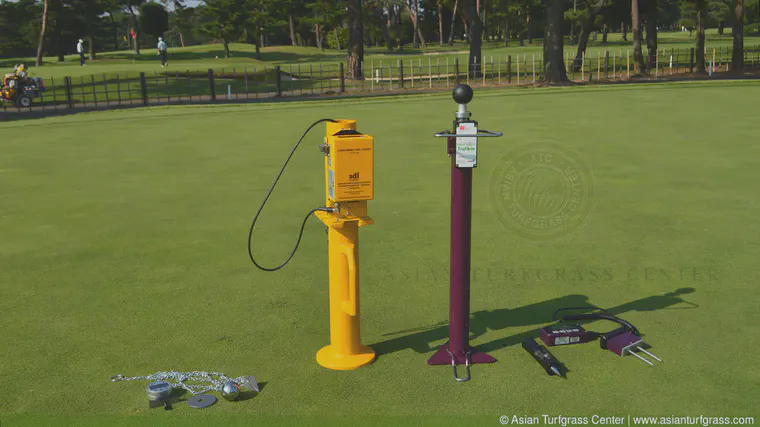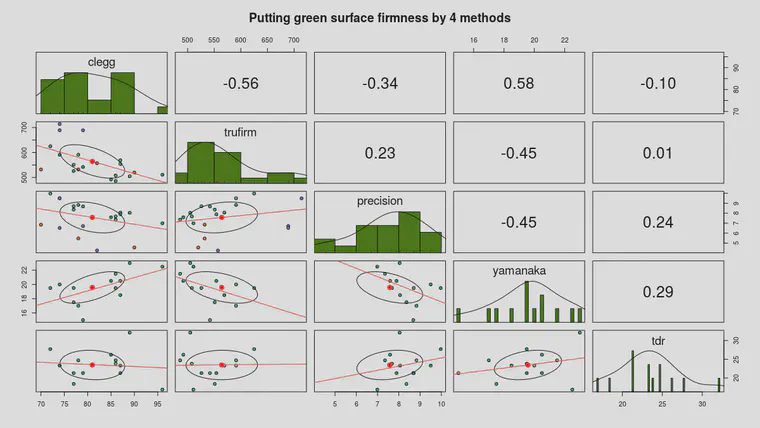Four tools to measure surface hardness
There are various tools available to measure surface firmness, or surface hardness, of turfgrass. For golf course putting greens, I’ve used four different tools, and my preferred method is the golf course firmness tester from SDI.

I’ve made paired measurements of surface firmness with all these tools. I did this on creeping bentgrass (Agrostis stolonifera) greens at two adjacent courses in Saitama, Japan, and on manilagrass (Zoysia matrella) and ultradwarf bermudagrass (Cynodon) green surfaces in Bangkok, Thailand. This chart shows the results.

The Clegg and the Trufirm have a correlation coefficient of -0.56. The value is negative because higher Clegg values mean a surface is harder, but higher Trufirm values mean a surface is softer. The Yamanaka tester is the standard tool used on golf courses in Japan. It has a correlation coefficient with the Clegg of 0.58. None of these methods had much of a correlation with soil moisture content. The highest correlation was with the Yamanaka tester and the TDR at 0.29.
A quick note here on units for these different tools in the chart above:
- the Clegg is in gravities times 10, I believe, recording the deceleration of the probe as it hit the surface
- I’ve expressed the Precision as mm below the surface, the depth the ball bearing sunk into the green
- Trufirm I think is inches below the surface divided by 1000, so 600 would be 600/1000 inches
- Yamanaka is mm and I am not sure all the details.
Of all these, I find the Clegg the easiest to use, the fastest to use, the one most sensitive to real differences in surface firmness that I observe with my feet, or with golf ball reaction, and the one that instantly gives a useable number and then I can move on to make another measurement.
I’ve been asked various times what the relation is, or if there is a correlation, between other methods and the Clegg. That’s kind of the point of this post, to look at the chart above, or at these charts here, to get some idea of what values would be if one is using a different tool.
Last year I saw this from the Presidents Cup.
Haven’t ever quite seen numbers like that before. pic.twitter.com/2TgKoSKDb7
— Andrew McDaniel (@drumcturf) December 13, 2019
That’s pretty firm. The Clegg still gives a reading. And it gives a value that is exactly in line with what I’d expect for really firm greens. I heard that the ball bearing drop (the Precision tool in images above) was difficult, perhaps impossible to use on those greens, because the bearing wasn’t making an indentation in the greens. Thus, the firmness could not be assessed by that method.
Here’s a bit more about green firmness, ball bounce, and measurements of surface firmness.